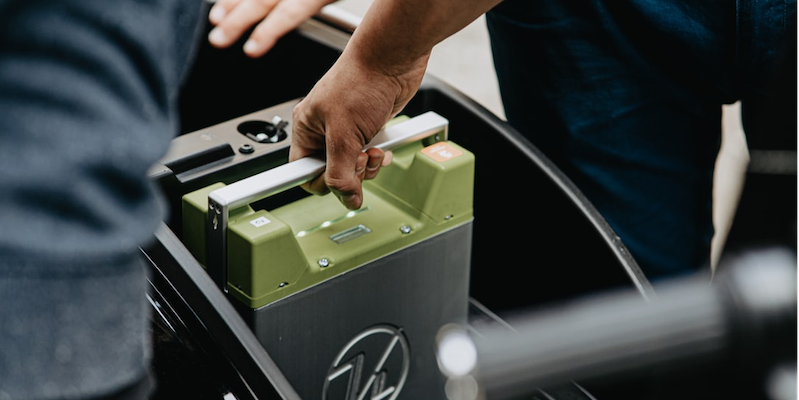Your mobility scooter might be the most liberating device you own. In recent surveys, 74% of mobility scooter users say the devices empower them to make trips they could not make otherwise. Almost half of the respondents say they would be “housebound” without one.
But, when the battery runs out, your scooter switches from a source of freedom to a frustrating anchor. Calculating how many miles you can afford to stroll along the beach before you will have to turn back can add stress to an otherwise relaxing outing.
Fortunately, it is possible to make the battery in your Savannah mobility scooter last longer than ever before.
Read the Manual
It may seem obvious, but some people overlook the obvious thing. Before you charge the battery, read the manual that came with it. It is important to follow all directions precisely, to avoid damaging any parts by accident.
Handle Batteries Carefully
Handle your mobility scooter’s batteries with care. Dropping a mobility scooter battery will damage it. Most mobility scooter companies upload tutorial videos that demonstrate the right way to lift, install, and remove batteries. You can often see these videos on the company’s website, or on popular video sites like YouTube or Vimeo.
Only handle batteries with dry hands. Take any rings or bracelets off before you pick up the battery. Water and conductive metals can damage the battery and injure your hands.
Choose a mobility scooter you can handle easily on your own. If you have low upper body strength or dexterity, choose a vehicle with lightweight batteries.
If a battery is too heavy for you to handle on your own, try bungee-like adjustable moving straps. These can give your lift extra “umph.” While straps like “EZ Lift” are designed for typical bodies, they also increase the strength of people with upper-body weakness.
Protect a New Battery in Your Mobility Scooter
New batteries are a bit finicky. To extend the life of a battery in your mobility scooter, take some protective measures the first week you use it. First, make sure the new battery is fully charged before you install it.
Then, ease into using it. You’ll want to keep the new battery at 70% or higher the first week. Try to plan your week’s schedule to include several short trips instead of long ones. Aim to recharge in-between use.
Charge to 100%—But Not Much Beyond That
As often as you can, extend the life of your mobility scooter battery by charging it to 100%.
Most mobility scooter batteries can handle being charged overnight. When batteries remain low or dead for too long it causes problems.
Charging a mobility scooter battery for eight-to-twelve hours is fine. But, don’t leave the battery plugged in for over 24 hours.
Paradoxically, overcharging the battery can mess with its internal energy storage process. An overcharged battery will start releasing electrical energy more quickly, which drains it faster. Suddenly, you’ll find a 100% batter doesn’t last as long as it used to.
Use Your Battery’s Charger
Your mobility scooter’s battery comes with a charger. Designers created this charger to be uniquely compatible with that battery and you will get the longest-lasting charge if you use it.
Of course, sometimes the original charger breaks or gets lost. In that case, contact the scooter or battery’s manufacturer to request a replacement.
If a replacement is too expensive, consider a few options. If you are a Medicare Part B recipient, Medicare may be able to replace your scooter battery charger at no cost to you.
Chart Your Course Wisely
If you are wondering how to make your mobility scooter battery last long when you are already out and about, consider what path you’re traveling. Puddles, mud, dust, debris, and gravel can damage the terminal connections in your scooter. This damage can harm the battery, which makes it lose energy faster than it should.
If you are trying to get from point A to point B, aim to take the smoothest path possible to get there. Use paved paths, boardwalks, and bike lanes whenever they’re available.
Plan Potential Rest Points
Before you go out on your scooter, try to plan a route with potential charging locations along the way. Bus stations, libraries, and food banks often offer electrical outlets. This is good information even if you think your battery will last the whole trip.
When the weather gets seriously wet—active rainfall or snow—park your scooter and cover it. It is wise to keep a scooter cover in your trunk or basket for these kinds of emergencies.
In a park or on a hiking trail, look for pavilions or other covered spaces. Try marking these out on a map ahead of time, so you know which one is closest, if you get caught in bad weather.
Store Smart
If you store your scooter for months at a time, take a few precautions. Make sure to store your battery somewhere that isn’t too hot or too cold. Then, charge it overnight at least twice per month.
Buy a Better Battery
Not all batteries are created equal. As energy technology improves, so do mobility scooter batteries. The best strategies on how to save the battery in your mobility scooter will evolve.
New energizing technologies, like magnesium-based LI-ON and structural batteries, may be on the market sooner than you think. In the meantime, lead crystal batteries, GEL, and lithium products could elevate your scooter’s charge today.
Only choose a battery compatible with your device.
Savannah Mobility Scooters, Batteries, Servicing, and More
At Freedom Mobility Center, Inc, we want to give you the power to get you moving. If the battery in your mobility scooter is draining fast, it might need a professional checkup. Our trained technicians provide high-quality maintenance and scooter repair and more, right when you need it.
Contact us today to request service—or to get any other Savannah mobility help you need. Our experts can answer your questions and help find the right mobility device for your lifestyle.

